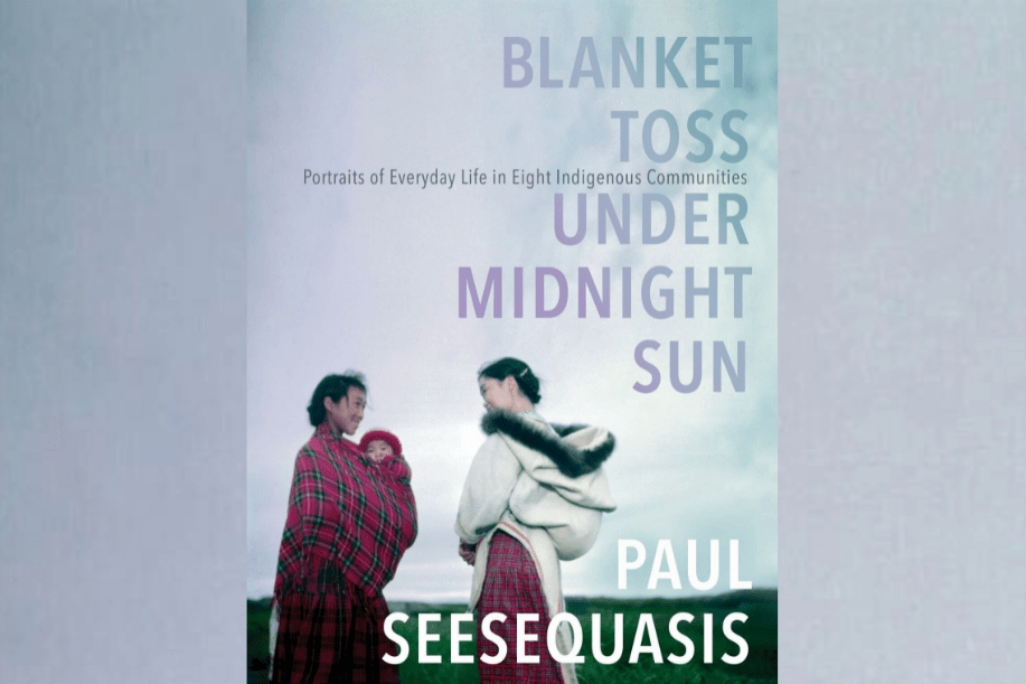About the Work
In his book, Blanket Toss Under Midnight Sun, Paul has gathered many stories connected to archival photos. These stories come from the friends and family of the people in the photos. Sometimes, he even hears from the people in the photos themselves. Paul tries to keep his own ideas out of this book and just retell the stories he learns as accurately as he can.
Paul choses photos that show the happier side of everyday life in Indigenous communities. This choice was inspired by his mother. She said that she was “tired of hearing just negative things about those times. . . there had been positive and strong things in Indigenous communities then.” (Blanket Toss under Midnight Sun, p.1).
From March 23rd to August 27th, 2023, the MacKenzie Art Gallery is also showing the art exhibition Paul Seesequasis—Turning the Lens: Indigenous Archive Project. This exhibition is also part of Paul’s ongoing work to identify, rename, and record Indigenous stories.
About the Artist

Paul Seesequasis is a Plains Cree writer, journalist and cultural activist living in Saskatoon. He collects archival images of everyday life among First Nations, Metis, and Inuit communities from the 1920s through the 1970s. By sharing these images on social media and collecting information from Indigenous communities, Paul identifies the people, places, events, and stories connected to each image. These details have often been left out of gallery, museum, and archive records.
Things to Think About
- Does your family have photo albums? Do you take pictures of you and your family or friends? If so, what stories do these photos tell?
- Why is it important to hear the stories about these photographs from the people who were actually there?
Studio Activity
Studio Activity
Listen to one of the stories from Blanket Toss Under Midnight Sun that Paul Seesequasis has gathered.
Think about how objects can become symbols in stories. Draw an object that symbolizes a story of your own.
Supplies:
- Book: Blanket Toss Under Midnight Sun, or. . .
- A computer/phone/tablet to listen to a reading
- Paper
- Pencils, erasers, and sharpeners
- Colouring materials of your choice
- Optional: an object to look at while you draw
Instructions:
1. Listen to or read one of the stories that Paul has gathered about old photographs. You can pick a story from Blanket Toss Under Midnight Sun to read out loud together. Or you can listen to Paul read one of these stories from his book (the actual stories start at 4:00 on each of these videos):
2. In each of these stories, an object (thing) plays an important role. In Emma Alfred’s story, it’s a beaver foot purse. In Maria Mikenak’s story, it’s her canoe. In the Fort George Rockers’ story, the important object could be their canoe, or a wet guitar, or even a pair of hip waders. Each of these objects becomes a symbol for the story it’s from; they are one small part of the story that can represent the entire thing.
Think about a story from your own life that you would like to share with the world. Try to think of an object that was important to that story.
3. Draw the object that symbolizes your story. If you have the object on hand, you can set it in front of you for something to look at as you draw. Try to draw as many details as you can see or remember on this object.
4. Practice telling your story to friends or family.

